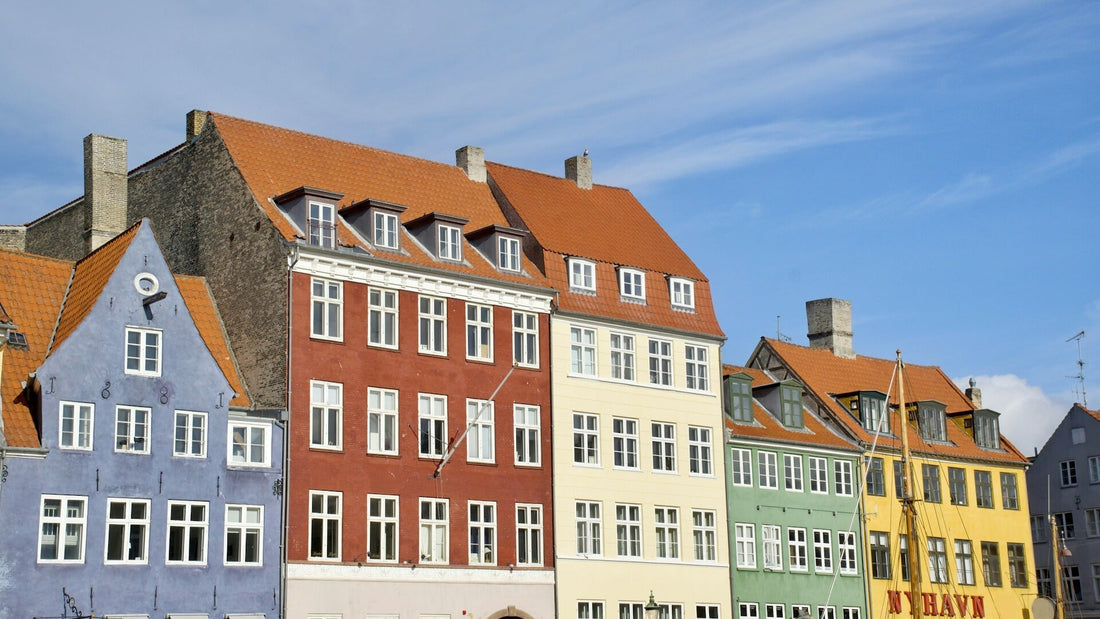Hej everyone,
When you think of Scandinavian design, clean lines, functional aesthetics, and timeless elegance come to mind. But what would Danish glass design be without one of its most important designers—Otto Brauer?
Although his name isn't immediately familiar to everyone, almost every design lover has seen or even held his work in their hands. His iconic Gulv vase, which he designed for the renowned Holmegaard glass factory, remains a symbol of minimalist chic to this day.
But who was Otto Brauer? And why are his designs still so sought after decades after their creation?
Let's dive into the world of a man who made history with glass.
Otto Brauer and Holmegaard – A groundbreaking collaboration
Otto Brauer's story is inextricably linked to the Danish glass factory Holmegaard. Founded in 1825, Holmegaard developed over the years into one of Scandinavia's most important glass manufacturers.
Brauer joined the company in the 1950s and brought with him a new, modern design language. At a time when Danish design was becoming increasingly popular internationally, he was adept at combining the tradition of glassmaking with contemporary minimalism.
His most famous work, the Gulvvase, was introduced in 1962 and quickly became a bestseller.
The Gulvvase – A masterpiece of Scandinavian design
Sometimes it doesn't take much to achieve perfection. The Gulvvase (Danish for "floor vase") is the best example of this. With its sleek silhouette, bold colors, and clean lines, it has become an icon of Scandinavian design.
What makes the Gulvvase so special?
- Clear, reduced design
- No unnecessary decorations, just pure beauty of form.
- Bright colors
Whether in green, blue, yellow or red – the vase attracts everyone’s attention with its intense color scheme.
versatility
Whether as a floor vase or a decorative element on a sideboard – it fits perfectly into modern interiors.
The vase was produced in various sizes, with the taller versions being particularly prized by collectors. To this day, it remains one of the most sought-after glass objects from Denmark.
Brewers and Danish glass design – An era of change
In the 1950s and 60s, Danish design was undergoing a period of change. Modernism was taking hold, and designers sought new ways to combine traditional craftsmanship with the demands of the modern world.
Otto Brauer was one of these visionaries.
While many glass designers focused on playful details, he went the opposite way: he created objects that impressed with their simplicity.
His approach was typical of Danish design philosophy:
✔ Form follows function – beauty comes from practicality.
✔ Timeless aesthetics – His works still fit perfectly into modern homes decades later.
✔ Craftsmanship at the highest level – Despite industrial production, each piece retains an individual touch.
Why Otto Brauer's influence is still felt today
Although Brauer never achieved the fame of some of his contemporaries, his work remains unforgettable. His designs continue to influence glass manufacturers and interior designers around the world.
Three reasons why his works are still in demand today:
- Collectibles with increasing value
- Original Gulvvases are highly valued by design enthusiasts and auction houses.
- Retro trend and mid-century design
The 1960s and 1970s are experiencing a revival – and with them Brauer’s works.
His designs have lost none of their fascination – they are as modern as ever.
Conclusion: A silent revolutionary of Scandinavian design
Otto Brauer may not be the loudest name in the world of design, but his influence is undeniable. With the Gulvvase, he created an object that is still considered a prime example of good design today.
His work for Holmegaard helped make Danish glass design internationally known. And his legacy?
Lives on in the homes and hearts of design lovers around the world.
So the next time you hold a brightly colored glass vase in your hands, take a closer look – you might be holding a piece of design history by Otto Brauer.

